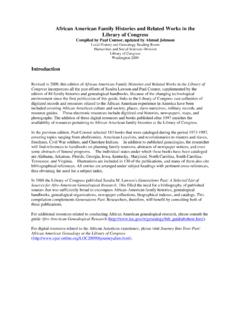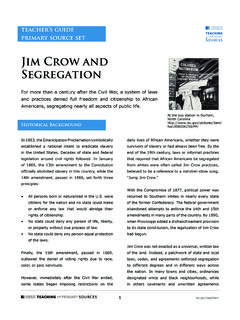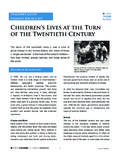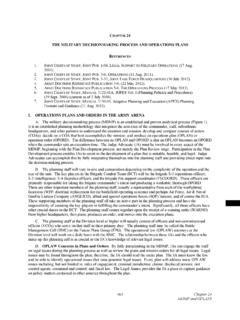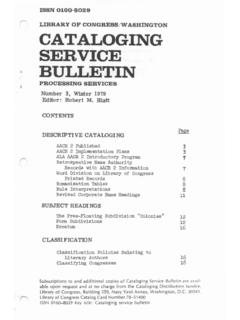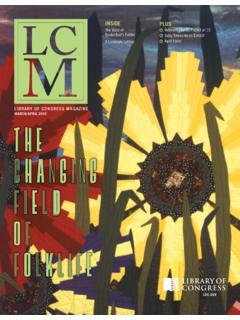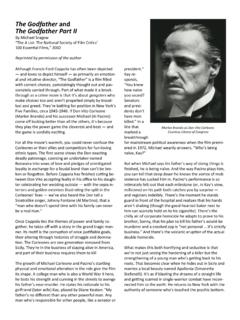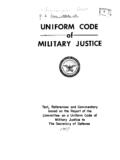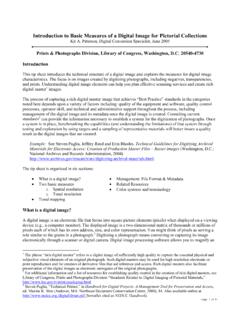Transcription of About Our Co-Sponsors: Program Goals
1 About Our Co-Sponsors: The Library of Congress is the largest library in the world, with more than 120 million items on approximately 530 miles of bookshelves. The collections include more than 18 million books, million recordings, 12 million photographs, million maps, and 54 million manuscripts. Founded in 1800, and the oldest federal cultural institution in the nation, it is the research arm of the United States Congress and is recognized as the national library of the United States. Library of Congress LIVE presents educational outreach programs throughout the school year.
2 Learn more at: The American Folklife Center was created in 1976 by the Congress to "preserve and present" the great heritage of American folklife through programs of research, documentation, archival preservation, reference service, live performance, exhibition, publication, and training. The American Folklife Center includes the Archive of Folk Culture, which was established in the Library of Congress in 1928, and is now one of the largest collections of ethnographic material from the United States and around the world. The Spanish Dance Society USA, The Spanish Dance Society USA, located in Washington, DC, is a non-profit educational organization dedicated to the promotion of interest in the art of Spanish dance.
3 Together with its performing affiliate, The Spanish Dance Theatre, its mission is to pursue excellence in the presentation, execution and instruction of Spanish dance. ON THE COVER: Photos of flamenco dancers from Spanish Dance Society USA include Jaime Coronado, and Lourdes Elias. Program Goals : Students will experience flamenco as an expression of folk culture of Andalusian Spain. They will learn that a flamenco performance consists of three inter-dependent parts: cante - the song; baile - the dance; and guitarra - guitar playing. Through lecture and demonstration, the essential elements of mood and comp s, or musical phrase, will be explored.
4 Students will interact with performers and have the opportunity to demonstrate their understanding of flamenco through rhythm and movement. Education Standards: GEOGRAPHY (National Geographic) Standard 4 - Places and Regions: The physical and human characteristics of places. Standard 9 - Human Systems: The characteristics, distribution, and migration of human populations on Earth s surface. Standard 10 - Human Systems: The characteristics, distributions, and complexity of Earth s cultural mosaics. Standard 12 - Human Systems: The process, patterns, and functions of human settlement.
5 MATHEMATICS (National Council for Teachers of Mathematics) Standard 1 - Number and Operations: Understand numbers, ways of representing numbers, relationships among numbers, and number systems. Standard 9 - Connections: Recognize and apply mathematics in contexts outside mathematics. SOCIAL STUDIES (National Council of Social Studies) Strand I - Culture: Experiences that provide for the study of culture and cultural diversity. Strand II - Time, Continuity and Change: Experiences that provide for the study of the ways human beings view themselves in and over time.
6 Strand III - People, Places and Environments: Analyzing human behavior in relation to its physical and cultural environment. DANCE (Kennedy Center ArtsEdge) Standard 3 - Understanding dance as a way to create and communicate meaning. Standard 5 - Demonstrating and understanding dance in various cultures and historical periods. Vocabulary List: baile: dance; originally a regional folk dance that incorporated free movement of the arms and upper torso cante: also cante flamenco ; singing which elongates words to fit within the comp s chico: light, happy, or humorous mood comp s: a rhythmic cycle or measure of time.
7 In flamenco , phrases are typically 8 or 12 counts contratiempo: counter-rhythm; sometimes produced with footwork (zapateado) or stamps (golpes de pies) in counter time to the performer s own hand clapping (palmas) desplante: a dancer s signal to the guitarist to link two parts of a performance, usually performed with a series of foot stamps (golpes de pie) flamenco puro: also arte flamenco puro; singing, dance, and guitar in the original Gypsy style, which was performed privately, and only later for a public audience fusion: a merging of distinct elements into a unified whole guitarra: guitar gypsy: a traditionally nomadic people who originated in northern India and now live chiefly in south and southwest Asia, Europe, and North America; also called the Rom, Roma, or Romani people hemiola: a rhythmic device in which the meter changes.
8 In a flamenco count of 12, the first 6 can be divided in half and the second 6 in thirds, 1-2-3-4-5-6-7-8-9-10-11-12 improvisation: free-form expression of music within strict rules of rhythmic compliance (comp s) intermedio: intermediate, moderate tempo jaleo: rhythmic sounds accompanying a flamenco performance; can be hand clapping (palmas), finger snapping (pitos), shouts (gritos), song (cante), or tapping with a wooden cane (baculos) jondo: deep; indicates a serious or sad mood llamada: a dancer s signal to the guitarist of the beginning of a new section of music letra: the lyrics of a song (cante); considered an inseparable part of the dance, and can express the mood and meaning of a selection palmas: hand clapping which is the basis for improvisation in flamenco .
9 Clapping can be sordas muffled, with cupped hands, or secas dry, or sharp, with three fingers of one hand slapped at an angle in the other syncopation: in a regular music pattern, the emphasis of the weak beats instead of the normally stressed down beats zapateado: footwork the different flamenco rhythms. Each of the a specific guitarist, singer and the (deep), intermedio chico categories. Most flamenco was jondoserious in mood. The chico dances lightest in and belong primarily to the their way back to Spain. Comp sphrasing of flamenco , is divided into two and contratiempo of the art form.
10 Mood and comp s.. (musical phrase) are important parts of defining rhythms found in flamenco has structure that enables thedancer to communicate with each other during performance. Jondo (intermediate), and (light) are the three puro , the de epest, and most and song are the nature dances that went to the Americas and made , the musical main categories, 4 or 8 counts and 12 counts. The use of accents (counter time) are integral parts Additional Resources: FOR TEACHERS Bernard Leblon, Gypsies and flamenco : The Emergence of the Art of flamenco in Andalusia.
